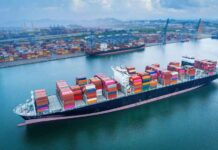Global Supply Chains have developed into large networks that are interconnected and involve actors that are currently located in a number of different nations. Companies and governments find it challenging to have complete awareness of vital components or possible dangers as a result of these sophisticated webs. The post-pandemic era brought to light how lengthy and complicated supply chains increase the likelihood of interruptions, costly delays, or even sabotage. This complexity has always created dangers, but the post-pandemic era brought this information to light.
Weaponizing Global Supply Chains Adds Another Layer of Risk
Inefficiency and delays are not the only problems that plague today’s supply chain organizations. At each stage of the production process, there is an increasing possibility that bad actors may be able to penetrate and weaponize the products. What was formerly considered only an operational risk has now evolved into a danger to the organization’s security. The chief executive officer of the global supply chain company ALOM, Hannah Kain, echoes this attitude and notes that the levels of paranoia have increased as a result of these types of dangers.
The susceptibility of global supply chains has prompted businesses to reevaluate the level of security that their systems possess, particularly in light of the fact that governments are under increasing pressure to implement more stringent regulations. Incidents such as the assaults in Lebanon have brought to light the urgent necessity for businesses to reconsider the locations where their products are manufactured and investigate the possibility of reshoring or relocating manufacturing closer to their homes or to dependable partners.
Keeping the Nation Safe and Maintaining Global Supply Chains
The idea of reshoring is not a novel one. Over the course of the last several years, labor activists and lawmakers in the United States have exerted pressure on American businesses to lessen their reliance on manufacturers located overseas, notably in China. With that being said, worries around national security have expedited this tendency. As a result of geopolitical tensions, such as Russia’s conflict in Ukraine or China’s possible threat to Taiwan, there has been an increased emphasis placed on the protection of global supply chains.
There are potential dangers associated with China’s industrial supremacy, notably in the production of important goods such as medical supplies and high-tech components. Any kind of geopolitical war has the potential to cause enormous disruptions. By placing taxes on Chinese imports and investing in local businesses such as semiconductor manufacture and electric car manufacturing, the United States government has already taken measures to mitigate the dangers associated with these situations.
Across all sectors, security concerns extend beyond the realm of technology
The assaults that took place in Lebanon serve as a warning that vulnerabilities in global supply chains extend beyond high-profile industries such as technology and telecoms. It is possible for rogue actors to take advantage of even very slight supervision gaps in a wide range of businesses. Due to the fact that just a small percentage of the millions of shipping containers that are transported around the world on a daily basis are subjected to inspection, the dangers encompass a wide range of items, from common consumer products to high-stakes materials.
The scope of security concerns has expanded beyond vital industries, and now a larger variety of companies are reevaluating their reliance on global production networks. To reduce the impact of these dangers, policymakers are advocating for the return of manufacturing to the country, expanding the scope of the reshoring discussion beyond the realm of high-tech companies.
To a greater extent, the pandemic has accelerated the shift toward localization
A movement toward production that is more locally based was sparked by the pandemic, in addition to other catastrophes such as the attack in Lebanon. Because of disruptions in global supply chains and the growing costs of transportation, businesses such as Walmart and Columbia Sportswear have begun to reevaluate their dependence on manufacturers located in Asia. An increasing number of companies have relocated their manufacturing to more convenient places, such as Mexico and Guatemala. Meanwhile, trade centers such as Laredo, Texas, have become more prominent than conventional ports on the West Coast of the United States.
Considering the fact that security breaches are becoming an increasingly serious risk, firms are reevaluating the calculations that were traditionally used to justify outsourcing to cheaper labor markets with less stringent rules. The advantages of having a more stringent control over manufacturing processes are now being considered by businesses, even if doing so results in increased expenses.
How to Strike a Balance Between Cost and Security in the Future of Global Supply Chains
There is a transition occurring in the future of global supply networks, with security becoming an increasingly important focus. It is possible that the transition toward reshoring and nearshoring may be slow; yet, the trend is unmistakable. Supply chain tactics may have been modified as a result of the pandemic; nevertheless, the rising dangers of weaponization and security breaches are now shaping the discourse that is taking place around risk management.
When it comes to making judgments in business in this new period, it is not just about making decisions for economic reasons; it is also about protecting national security. It is imperative that governments and enterprises continue to make investments in strengthening global supply networks in order to maintain their resilience in the face of a more uncertain global framework. Although the dangers may be concealed, the stakes have never been higher than they are now.
In conclusion, the reconfiguration of global supply chains is not only about reducing costs; it is also about securing key resources and defending national interests while doing so. This change represents a substantial transition in the way that businesses handle manufacturing, logistics, and supply chain management. It ensures that these businesses are ready to face problems in the future that are both economic and geopolitical from a variety of perspectives.

























